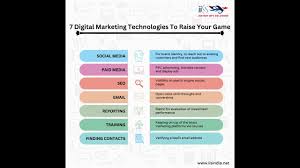Fullstack Development: Bridging the Gap Between Frontend and Backend
In the fast-paced world of web development, a new term has emerged that encapsulates versatility and expertise – fullstack development. Fullstack developers are skilled professionals who possess knowledge in both frontend and backend technologies, allowing them to work seamlessly across the entire web development stack.
So, what exactly is fullstack development? In simple terms, it refers to the ability to work on both the client-side (frontend) and server-side (backend) of web applications. A fullstack developer is proficient in multiple programming languages, frameworks, and databases, enabling them to handle various aspects of a project without relying heavily on others.
On the frontend side, a fullstack developer is well-versed in HTML, CSS, and JavaScript. They have an eye for design and can create visually appealing user interfaces that are intuitive and responsive. They understand user experience (UX) principles and implement best practices to ensure seamless navigation and interaction for website visitors.
When it comes to the backend, fullstack developers have a solid understanding of server-side languages such as Python, Ruby, PHP, or JavaScript (Node.js). They can build robust APIs (Application Programming Interfaces), handle data storage with databases like MySQL or MongoDB, and implement server-side logic for handling requests and processing data.
The true strength of a fullstack developer lies in their ability to connect the frontend with the backend. They can seamlessly integrate different components of a web application by leveraging frameworks like React.js or Angular.js on the frontend while utilizing frameworks like Express.js or Django on the backend. This allows for efficient communication between different parts of an application while ensuring smooth functionality.
One major advantage of having fullstack developers on board is their ability to work independently across different layers of a project. They can take ownership of end-to-end development tasks – from designing user interfaces to implementing complex business logic – reducing dependencies on multiple team members. This flexibility not only streamlines the development process but also enhances collaboration within the team.
Furthermore, fullstack developers have a holistic understanding of web development, which enables them to optimize performance and improve overall user experience. They can identify and address bottlenecks at both frontend and backend levels, resulting in faster loading times, efficient data handling, and better scalability.
In conclusion, fullstack development is a valuable skill set that brings together frontend and backend expertise. Fullstack developers are versatile professionals who can handle various aspects of web development projects independently. Their ability to bridge the gap between frontend and backend allows for seamless integration and efficient communication within web applications. As technology continues to evolve, the demand for fullstack developers will only increase, making them an invaluable asset in the world of web development.
4
- What coding language is full-stack?
- What is full-stack salary?
- What is required for full stack developer?
- What is the meaning of Fullstack?
What coding language is full-stack?
When it comes to fullstack development, the choice of coding language may vary depending on the specific project requirements and personal preferences. Fullstack developers have the flexibility to work with a range of coding languages, both on the frontend and backend. Commonly used languages for full-stack development include JavaScript, Python, Ruby, PHP, and Java. JavaScript is particularly popular as it can be used for both frontend (with frameworks like React.js or Angular.js) and backend (with frameworks like Node.js). Ultimately, the coding language for full-stack development is determined by factors such as project scope, scalability needs, team expertise, and performance considerations.
What is full-stack salary?
The term “full-stack salary” refers to the average or potential earnings of a fullstack developer. As fullstack developers possess expertise in both frontend and backend technologies, their skills are highly sought after in the job market. The salary of a fullstack developer can vary depending on factors such as experience, location, industry, and company size. Generally, fullstack developers command competitive salaries due to their versatility and ability to handle various aspects of web development projects. It is important to note that salary ranges can differ significantly based on individual circumstances and market conditions.
What is required for full stack developer?
Becoming a full stack developer requires a diverse skill set and a solid understanding of both frontend and backend technologies. To excel in this role, one must have proficiency in programming languages such as HTML, CSS, and JavaScript for frontend development, as well as server-side languages like Python, Ruby, PHP, or JavaScript (Node.js) for backend development. Additionally, knowledge of frameworks like React.js or Angular.js on the frontend and Express.js or Django on the backend is crucial. A full stack developer should also be familiar with databases such as MySQL or MongoDB and have experience in API development. Strong problem-solving abilities, attention to detail, and the ability to work independently are essential traits for a successful full stack developer. Continuous learning and staying up-to-date with the latest industry trends are also important to keep pace with the ever-evolving web development landscape.
What is the meaning of Fullstack?
The term “Fullstack” refers to a comprehensive skill set possessed by developers who have expertise in both frontend and backend web development. Fullstack developers are proficient in a range of programming languages, frameworks, and databases, allowing them to handle various aspects of a web application’s development process. They can seamlessly work on both the client-side (frontend) and server-side (backend) of an application, bridging the gap between design and functionality. In essence, being “Fullstack” means having a well-rounded understanding of the entire web development stack, enabling developers to tackle end-to-end tasks and create fully functional and visually appealing websites or applications.



